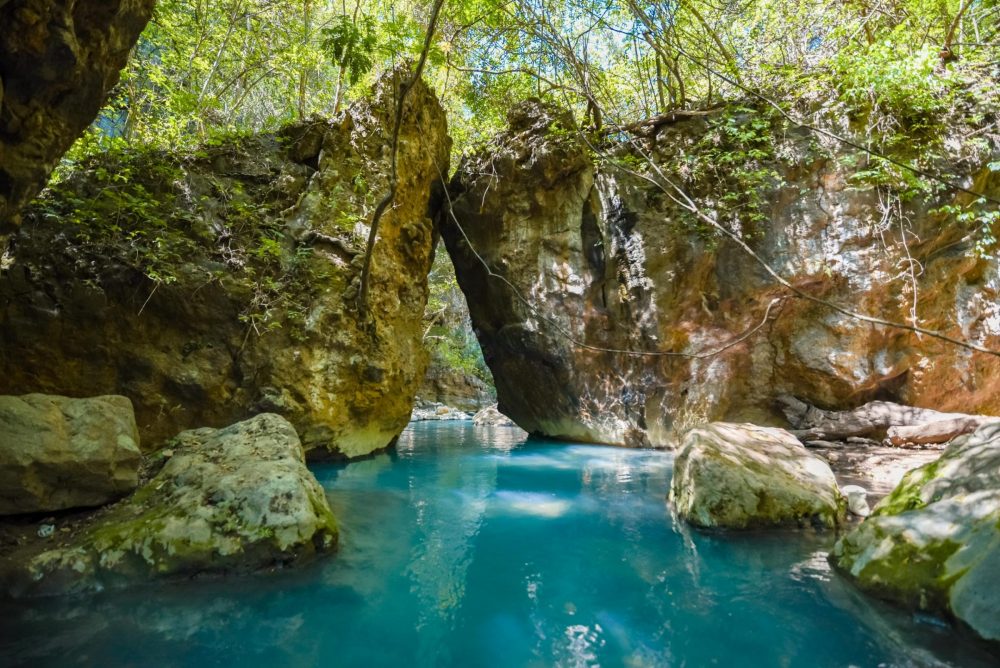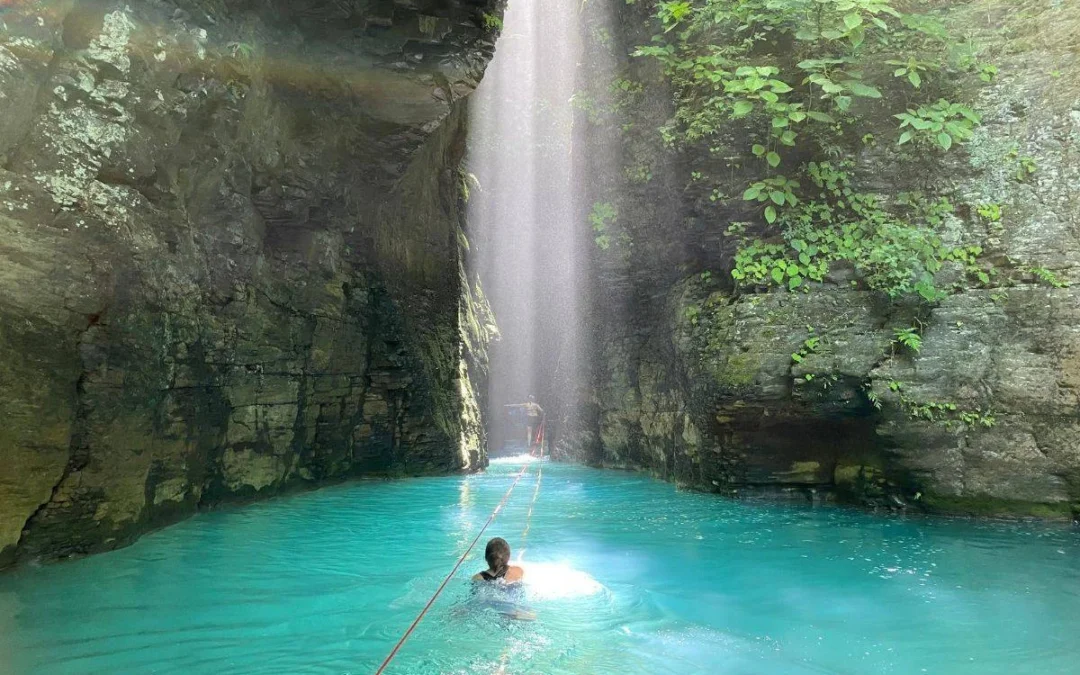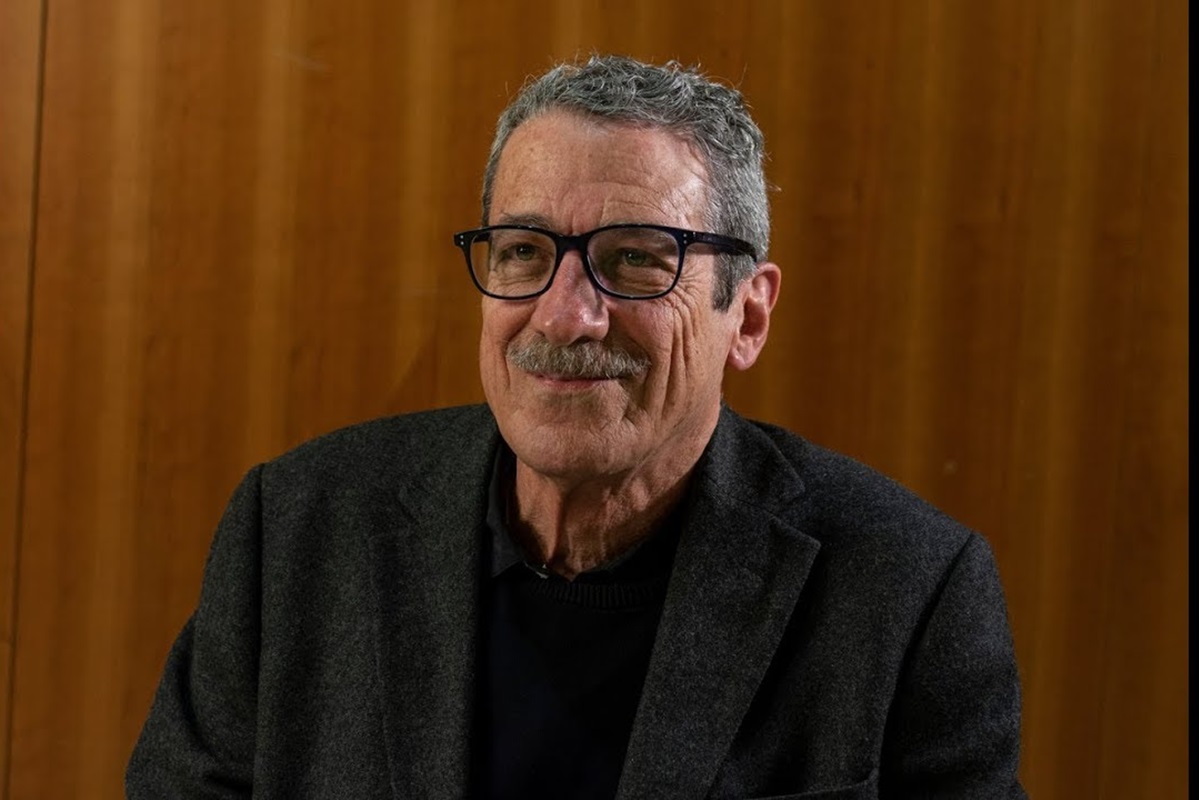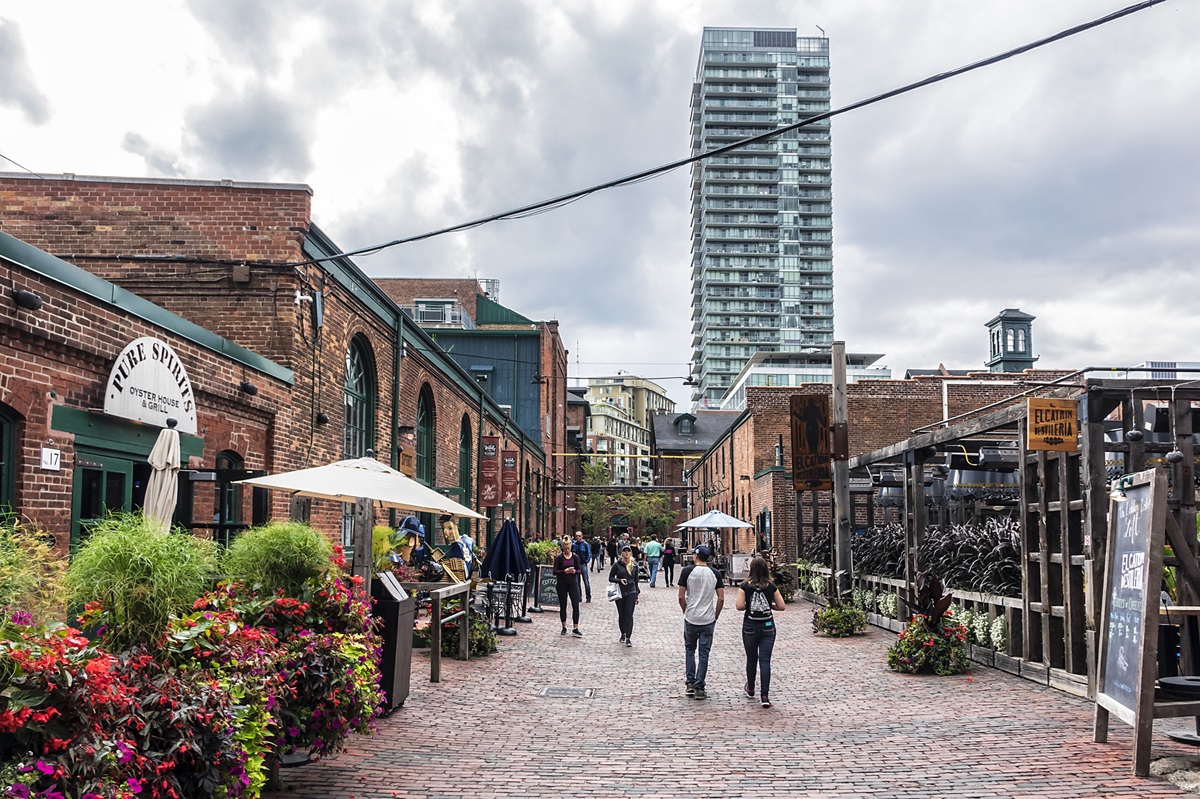Beyond its golden beaches and sun-drenched resorts, Costa Rica’s Guanacaste region hides a different rhythm—one of roaring waterfalls, volcanic ridges, and trails where the rainforest breathes in your ear. While most travelers chase sunsets in Tamarindo or Conchal, those who follow the sound of rushing water discover a side of Guanacaste that feels wild, untouched, and deeply alive.
One of the best introductions to this untamed landscape is the La Leona Waterfall hike, near Curubandé, on the slopes of Rincón de la Vieja. The journey doesn’t just lead to a turquoise waterfall concealed inside a canyon—it’s a passage into the raw heart of Costa Rica, where every step tells a story of stone, water, and volcanic fire.
Hiking Into the Blue Heart of Curubandé
La Leona is not the kind of waterfall you stumble upon by chance. The trail, hidden behind local farms and accessible only with a guide, winds through dry forest and volcanic rock formations. You walk under the canopy of giant Guanacaste trees, wade across the Río Blanco, and climb along basalt walls that open suddenly into a slot canyon glowing with electric-blue water.

The first glimpse of the waterfall feels cinematic: a narrow stream of light cuts through the canyon ceiling, illuminating the turquoise pool below. Swimming here feels otherworldly—like floating in the middle of a volcano’s dream. The water owes its surreal color to the minerals filtered through Rincón de la Vieja’s geothermal layers.
Adventure travelers can add rappelling or tubing along the river, while those seeking calm can linger on the warm stones, listening to the symphony of birds and cicadas echoing through the canyon. Local guides, many of them born in Curubandé, often share legends about La Leona—the “lioness” spirit said to guard the waterfall.
Beyond the Famous Trails: Hidden Cascades of Guanacaste
La Leona may be the star, but Guanacaste’s waterfall network stretches far beyond Curubandé. The province is a geological paradox: one of Costa Rica’s driest regions that hides some of its most spectacular water treasures—especially during the green season, when the hills awaken and rivers carve new paths through the volcanic earth.
Llanos de Cortés: The Oasis Near Liberia
Just outside Liberia, a short detour from the Inter-American Highway leads to Llanos de Cortés, a waterfall so graceful it seems sculpted for postcards. A 10-minute walk through the forest reveals a curtain of water cascading into a shallow pool, surrounded by mossy cliffs.
Families come here for easy swims, but early in the morning, before the day-trippers arrive, it’s a tranquil spot to photograph capuchin monkeys or meditate with the sound of falling water. Locals from the nearby town of Bagaces manage the entrance, ensuring the area remains clean and safe—a small but meaningful model of community-led conservation.
Sensoria: The Rainforest’s Thermal Secret
High in the mountains near Rincón de la Vieja lies Sensoria—Land of Senses, a private reserve where waterfalls meet thermal springs. The hike here unfolds through six kilometers of dense rainforest, with bridges crossing crystalline streams and the scent of orchids in the air.
Visitors swim in pools naturally heated by geothermal energy and bathe beneath two dramatic falls—Buenos Aires and La Jícara—while toucans fly overhead. Unlike the crowded hot springs of Arenal, Sensoria limits daily visitors, protecting both wildlife and the serenity that defines the experience.
It’s the kind of place where you realize why Guanacaste is called “the dry forest that dreams of rain.”
Hidden Gems of the Volcano Trail
The flanks of Rincón de la Vieja National Park are a wonderland of secret cascades. Trails like La Cangreja and Escondida lead hikers through fumaroles, bubbling mud pots, and sulfur-scented steam vents before opening into crystalline waterfalls framed by volcanic cliffs.
The park’s mix of cloud forest and dry tropical ecosystem creates an extraordinary biodiversity corridor. You might spot a motmot or hear the guttural call of a howler monkey echoing over the steaming landscape. Hiking here feels like walking across the planet’s timeline—where creation is still ongoing.
Hiking Off the Map
For those who crave solitude, Guanacaste rewards curiosity. Local guides in towns like Tilarán or Cañas often offer “off-the-map” routes to waterfalls hidden on private land, accessible only by foot or horseback. These micro-expeditions often include encounters with rural families who still live off the land—making coffee on wood stoves, pressing sugarcane juice, or telling stories about how they cross the same rivers barefoot during the rainy season.
These intimate hikes are not listed on tour platforms. They survive through word-of-mouth and the goodwill of locals who see adventure tourism as a bridge to sustainability, not exploitation.
When to Go and What to Expect
The best time for waterfall hiking in Guanacaste is during the green season (May to November). Trails are lush, rivers fuller, and waterfalls more dramatic. However, the weather can shift quickly—expect sudden downpours and slippery rocks. During the dry season (December to April), trails are easier to navigate, though some smaller falls lose volume.
Always wear sturdy shoes, bring biodegradable sunscreen, and respect local regulations. Many waterfalls—like those inside national parks—have restricted access during heavy rains for safety reasons. Hiring a certified local guide not only enhances safety but also contributes directly to rural economies.
Sustainable Adventure and the Spirit of “Pura Vida”
Costa Rica’s ecotourism model was born from the belief that adventure and preservation can coexist. In Guanacaste, this philosophy thrives: park rangers protect nesting turtles in Las Baulas while volunteers replant forests near Santa Rosa; coffee cooperatives sponsor trail maintenance; and indigenous stories are shared alongside GPS coordinates.
The La Leona Waterfall hike itself is a shining example. Managed in partnership with local families, it limits group sizes, prohibits littering, and channels part of the income into community projects in Curubandé. The result is an adventure that feels both thrilling and ethical—a balance few destinations achieve.
The Reward at the End of the Trail
Each waterfall in Guanacaste tells its own story, but they share a common language: movement. Water that once fell as Pacific rain now rushes through volcanic veins, shaping the land and nourishing its people. Hiking these trails isn’t just about chasing the next cascade; it’s about understanding how life, in Costa Rica, always finds a way to flow.
When you finally return from a day of exploring—with your boots muddy, your clothes damp, and your mind uncluttered—you realize what Pura Vida truly means. It’s not just a greeting or a slogan. It’s the feeling of standing under a hidden waterfall, somewhere deep in Guanacaste, and knowing you’ve touched a piece of the country’s soul.







